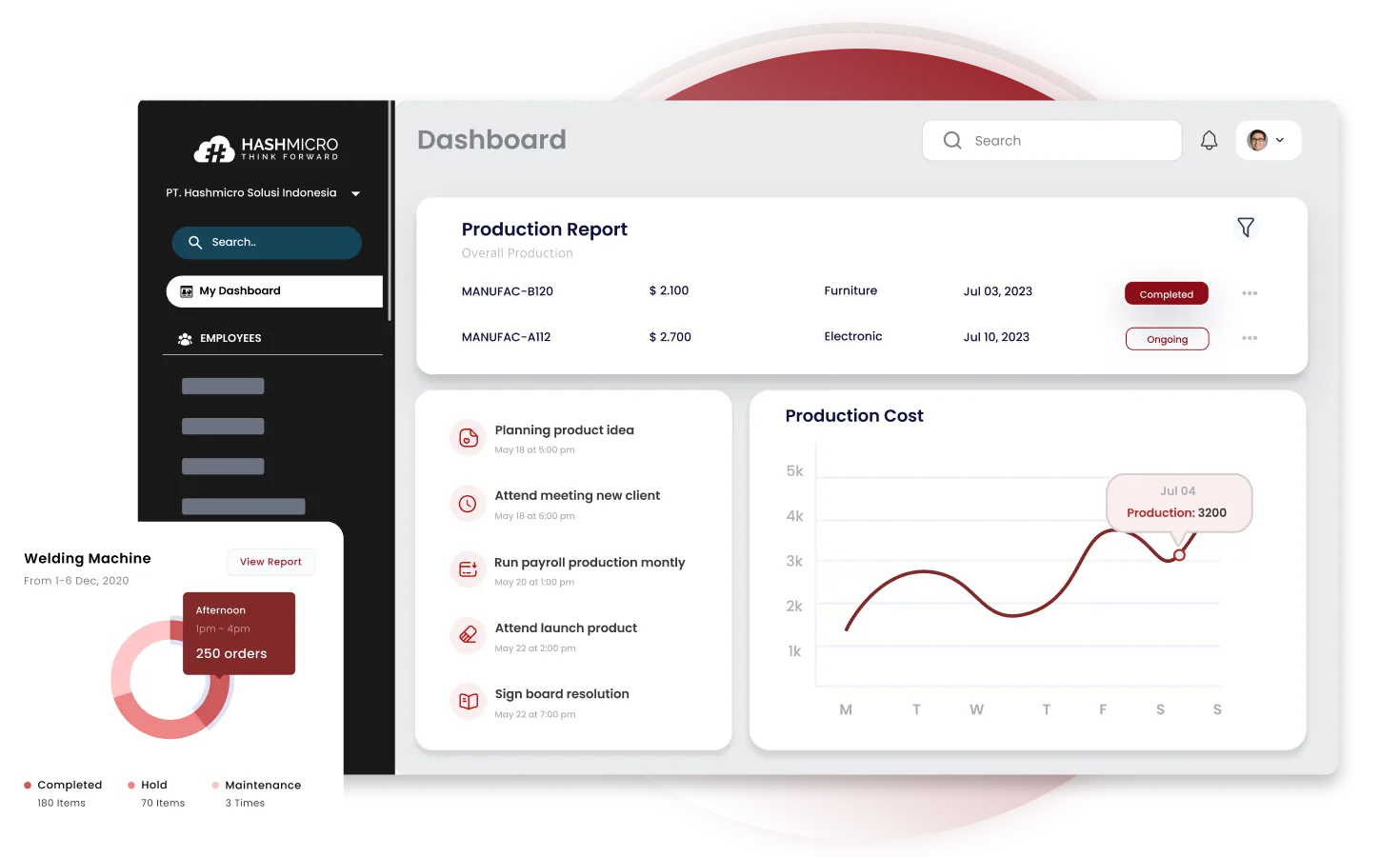Numerous companies continue to rely on manual tracking methods in Singapore. The HERE Technologies APAC On The Move 2023 report reveals that nearly half of the 1,300 businesses surveyed use asset tracking and shipment monitoring software that requires manual input to manage assets and cargo.
Without supply chain visibility (SCV), businesses face inventory shortages, shipment delays, and increased operational costs. Manual tracking and fragmented data make it difficult to make informed decisions, leading to supply chain bottlenecks and reduced customer satisfaction.
To overcome these challenges, companies now use advanced supply chain visibility solutions that provide real-time data, predictive analytics, and automation. These solutions empower businesses to optimize workflows, improve decision-making, and reduce risks.
This guide explores everything you need to know about supply chain visibility (SCV), its importance, benefits, challenges, trends, and the best solutions available. Please keep reading if you’d like to enhance supply chain efficiency and gain a competitive edge.
Table of Content:
Table of Content
Key Takeaways
|
What is Supply Chain Visibility (SCV)?
Supply chain visibility (SCV) is the process of monitoring and tracking supply chain activities in real time. It offers valuable insights into the movement of goods, inventory status, supplier performance, and logistics operations.
An efficient supply chain visibility system helps businesses foresee disruptions, streamline workflows, and enhance efficiency. Supply chain visibility software also automates tracking, gains predictive insights, and makes data-driven decisions that improve performance.
Why is Supply Chain Visibility Important?
A lack of visibility in supply chains creates inefficiencies that affect product availability, delivery timelines, and operational costs. When businesses cannot track inventory levels or monitor shipments in real time, they risk overstocking, stockouts, and delays.
These issues increase operational costs and damage customer relationships. Implementing global supply chain visibility solutions allows businesses to improve efficiency, reduce risks, and enhance overall performance.
With real-time tracking and AI-driven insights, companies can detect disruptions early and make proactive adjustments to keep operations running smoothly.
Key Benefits of Supply Chain Visibility
An effective supply chain visibility system delivers multiple benefits that improve supply chain operations. One of the most significant advantages is risk management. With real-time visibility, businesses can identify disruptions and take corrective actions before they escalate. This minimizes the impact of supplier delays, production slowdowns, or transportation issues.
Another critical benefit is better inventory control. SCV enables businesses to accurately monitor stock levels, reducing the likelihood of overstocking or running out of essential products. It also enhances decision-making, allowing managers to access real-time data and adjust procurement, warehousing, and logistics strategies accordingly.
Additionally, SCV is key in cost reduction by optimizing transportation, storage, and procurement processes. With a clearer understanding of supply chain movements, businesses can identify inefficiencies and cut unnecessary expenses. Enhanced supply chain visibility also strengthens relationships with suppliers and customers by ensuring on-time deliveries and improved service reliability.
Supply chain visibility vs. supply chain transparency
Many businesses confuse supply chain visibility with transparency, but they are distinct concepts:
| Aspect | Supply chain visibility | Supply chain transparency |
| Focus | Tracking and monitoring internal processes | Sharing data with external stakeholders |
| Data access | Internal teams access real-time supply chain data | Data is openly shared with partners, customers, and regulators |
| Purpose | Improve internal efficiency and decision-making | Build trust and meet regulatory compliance |
| Example | Tracking shipment status in real time | Disclosing sourcing practices to customers |
While SCV focuses on real-time tracking, transparency emphasizes openness and ethical business practices. A strong SCV strategy supports supply chain transparency by ensuring reliable and accurate data sharing.
How Supply Chain Visibility Works
SCV integrates real-time tracking, cloud computing, and data analytics to give businesses a clear view of their supply chain operations. Here’s how it works:
- Data collection – Supply chain visibility systems gather data from various sources, including IoT devices, RFID scanners, and ERP software.
- Data integration – All collected data is processed and stored in a centralized system for easy access.
- Analysis and insights – AI and machine learning analyze the data, detecting patterns and potential risks.
- Decision-making and automation – Businesses can automate workflows, trigger alerts, and optimize logistics operations based on real-time insights.
Trends in Supply Chain Visibility: Key Innovations Driving SCV
As supply chains become more complex, technology improves real-time visibility, automation, and decision-making. Businesses now rely on AI analytics, IoT tracking, and cloud-based platforms to optimize inventory, reduce costs, and improve supply chain resilience.
AI-powered predictive analytics for demand forecasting
AI-driven predictive analytics helps businesses forecast inventory needs based on historical sales, market trends, and seasonal shifts. This prevents overstocking and shortages while enhancing procurement efficiency.
AI also automates supply chain processes, reducing manual errors and improving decision-making. Companies can detect potential disruptions early, allowing them to adjust operations before issues arise.
IoT and RFID for real-time tracking and inventory management
IoT and RFID technology improve inventory tracking and supply chain visibility. IoT sensors monitor shipment conditions and warehouse storage, ensuring accurate stock levels.
RFID automates stock movement tracking, reducing errors and improving efficiency. This technology is especially useful for businesses managing large warehouses and complex logistics networks.
Cloud-based platforms for centralized supply chain management
Cloud-based supply chain visibility solutions enhance visibility and data accessibility. Unlike traditional systems, cloud platforms allow companies to supply chain management track operations remotely and collaborate with suppliers in real time.
By centralizing supply chain data, businesses can eliminate inefficiencies and improve responsiveness. This helps companies reduce operational costs and streamline logistics management.
The future of supply chain visibility
Businesses adopting AI, IoT, and cloud solutions gain greater operational efficiency and resilience. These technologies help companies automate workflows, improve decision-making, and enhance supply chain control.
Challenges in Achieving Supply Chain Visibility and Solutions
Common challenges
- Data silos – Disconnected systems make it difficult to access real-time data
- Lack of real-time tracking – Delayed updates lead to inefficiencies
- Complex supplier networks – Managing multiple suppliers across different regions is challenging
Solutions
To overcome these challenges, businesses must invest in advanced supply chain software that integrates data into a centralized system. Using IoT and RFID technologies can also enhance real-time tracking and improve visibility. Lastly, adopting AI-driven automation allows businesses to streamline processes and reduce human errors.
While the investment in automated supply chain solutions may seem significant, the long-term benefits, including cost savings and increased efficiency, make it worthwhile. If you are interested in learning more, download the price list provided.
Optimize Your Supply Chain With HashMicro’s Supply Chain Software Order
HashMicro’s Supply Chain Management Software offers advanced tools for real-time tracking, automation, and predictive analytics. Key features include:
- RFID Warehouse Automation – Monitors stock movements in real time
- 3D Warehouse Visualization – Enhances warehouse storage and layout
- OCR for Receiving – Streamlines invoice and shipment data processing
- Stock Forecasting – Employs AI to anticipate future inventory requirements
- Run Rate Reordering Rules – Automates replenishment based on usage trends
With HashMicro’s SCV solution, businesses can improve visibility, eliminate inefficiencies, and achieve total supply chain control.
Conclusion
Supply chain visibility minimizes risks, boosts efficiency, and improves decision-making. Companies lacking real-time tracking face delays and operational inefficiencies. Automated SCV solutions help optimize workflows and strengthen supply chain resilience.
HashMicro’s Supply Chain Software offers real-time tracking, automation, and AI-driven insights. Features like RFID automation, stock forecasting, and predictive analytics help businesses reduce costs, enhance inventory management, and improve supply chain efficiency performance.
Transform your supply chain today! Book a free demo with HashMicro to discover how automation and AI-powered visibility can streamline operations, reduce risks, and drive efficiency in your supply chain management.

FAQ About Supply Chain Visibility
-
How does supply chain visibility impact customer satisfaction?
Supply chain visibility ensures on-time deliveries, accurate order tracking, and reduced delays, which improves customer trust and satisfaction. When businesses can monitor inventory and shipments in real time, they can provide better service, faster response times, and fewer stock shortages.
-
Is supply chain visibility only important for large enterprises?
Absolutely, supply chain visibility benefits businesses regardless of size. Small and medium enterprises (SMEs) can enhance inventory accuracy, minimize waste, and streamline logistics costs. Thanks to scalable cloud solutions, even smaller firms can access sophisticated SCV systems at an affordable price.
-
How does supply chain visibility help with regulatory compliance?
SCV aids businesses in meeting industry regulations by offering precise records of supplier sourcing, product movement, and storage. This is vital for pharmaceuticals, food production, and retail, where compliance is crucial for safety and quality.
-
What is the difference between traditional and modern SCV solutions?
Traditional SCV relies on manual tracking, spreadsheets, and outdated software, leading to delays and errors. Modern SCV solutions use AI, IoT, and real-time data integration, enabling businesses to automate tracking, optimize workflows, and improve decision-making with predictive analytics.
-
How quickly can a business see results after implementing SCV software?
The timeline depends on the complexity of the supply chain and the chosen solution. Many businesses experience improvements in efficiency, cost savings, and tracking accuracy within a few months. AI-driven SCV software speeds up adoption by automating key processes and providing instant insights

























































